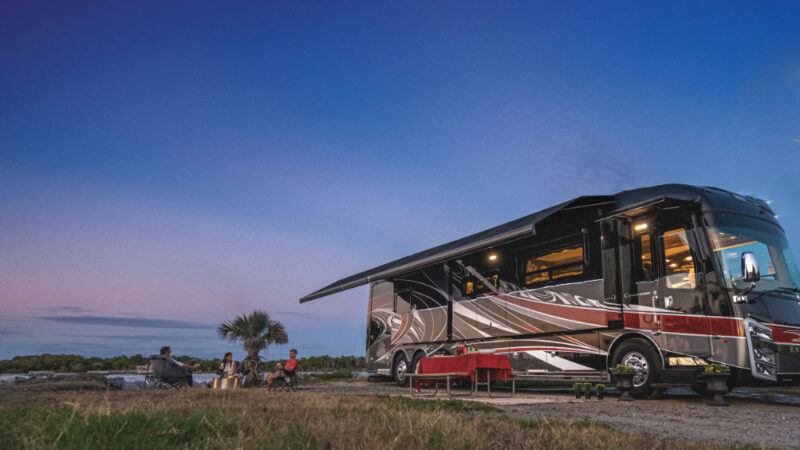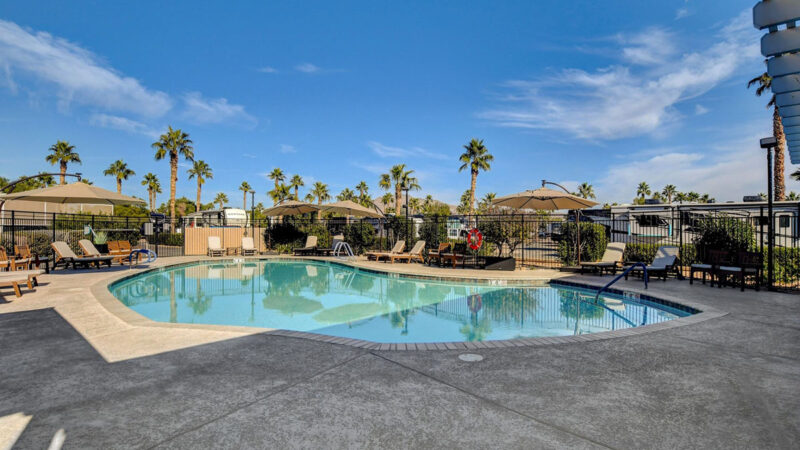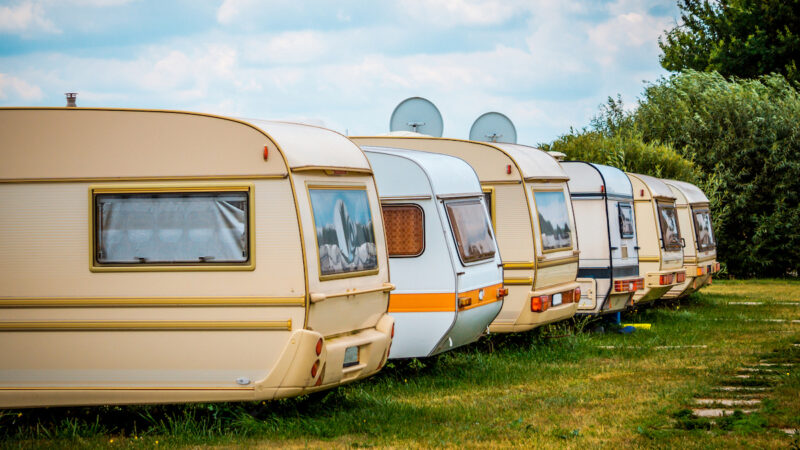EcoFlow Wave 3 Review: Better in Every Way
When EcoFlow first announced its Wave portable air conditioner a few years back, it quickly became the go-to option for staying cool while camping. Less than a year later, the second-generation model hit the market, bringing more power and features—not to mention an onboard heater—along with it. Now, after nearly a two-year wait, the EcoFlow Wave 3 has arrived, and it is an improvement in pretty much every way.

Photo Credit: Kraig Becker
What’s New?
Whenever you’re dealing with a new generation of any product, it’s important to highlight what’s new. After all, if you already own a previous version of the Wave, you’ll want to know if this one is worth the upgrade. The short answer to that question is “yes,” but it does depend on how much you use your existing model. And if you’re considering purchasing a portable air conditioner, but haven’t done so yet, this is the one to go with.
The Wave 3 sees significant performance improvements over the Wave 2, which was already a step up from the original model. According to EcoFlow’s specs, when used as an air conditioner, the third-generation Wave jumps from 5,100 BTUs (1,500W) to 6,100 BTUs (at 1,800W). Its heating capacity also gets a modest bump, going from 6,100 BTUs (1,800W) to 6,800 BTUs (2,000W), while pushing out more air (330 vs. 250 cubic meters/hour). On top of that, the unit can now act as a dehumidifier, further improving comfort levels in an enclosed space.
As noted above, the Wave 3’s higher output does come with more power demands, but not substantially so. In fact, despite its higher BTU ratings, it still manages a runtime of up to 8 hours when connected to EcoFlow’s optional add-on battery pack. That’s pretty impressive considering you’re getting more heating and cooling capabilities. And of course, you can keep the device running longer by using one of EcoFlow’s power stations, too.
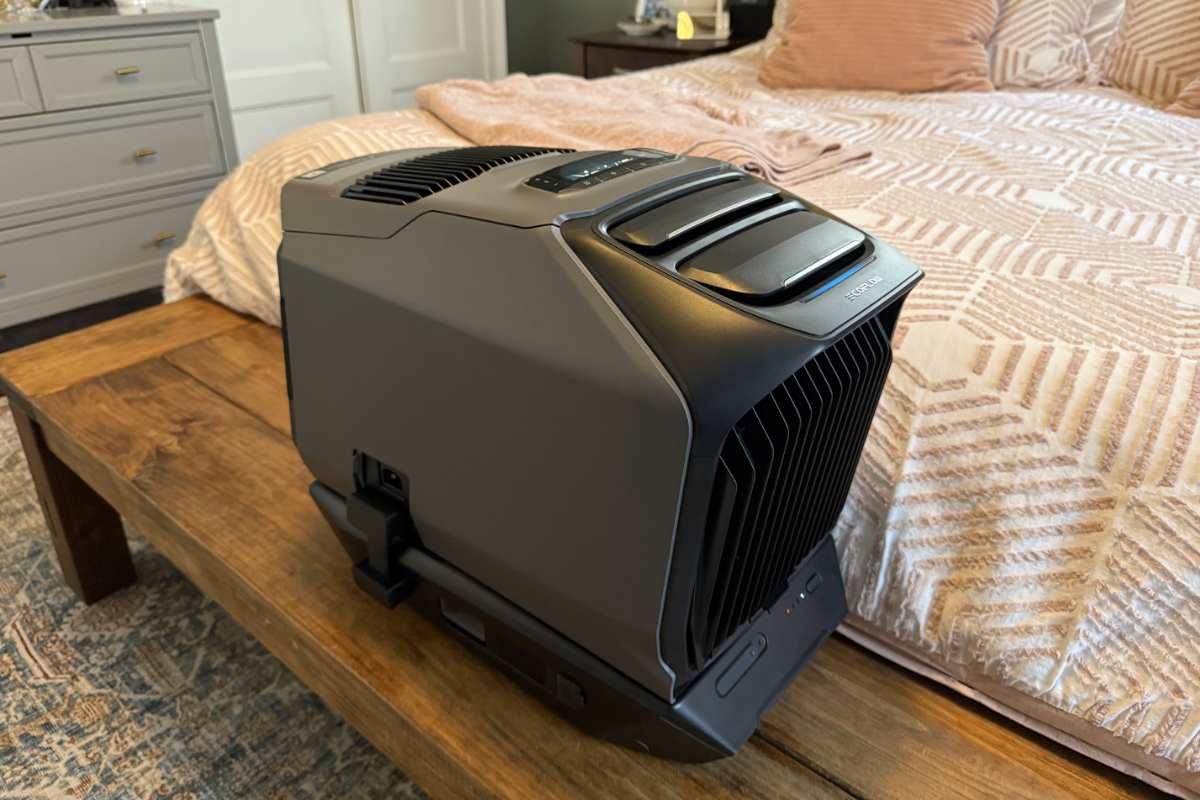
Photo Credit: Kraig Becker
Putting It Through Its Paces
Of course, numbers on a spec sheet are one thing, and real-world performance is another. As it turns out, the roller-coaster temperatures of spring make for the perfect opportunity to test the EcoFlow Wave 3, as it gives us the chance to try out both its cooling and heating capabilities. That’s just what we did over the past few weeks, coming away very impressed with what we found.
As with the previous versions of the Wave, the latest model is able to cool down (or heat up) a small space (think 150-175 square feet) in a relatively short time. EcoFlow says it takes about 15 minutes to achieve the desired temperature in such a setting, but we found it generally took less time than that. Sure, if you’re trying to dramatically adjust the conditions in an RV or small room, it will take a little longer, but under typical conditions, we usually achieved our target temperature in about 10 minutes or less.
That improved performance is helped in part by stronger air flow and the unit’s improved power. As with past models, you simply turn the Wave 3 on, set it to heat or cool mode, and adjust the thermostat to your desired temperature. After that, the device just does its thing, quickly—and quietly—creating a more comfortable environment.
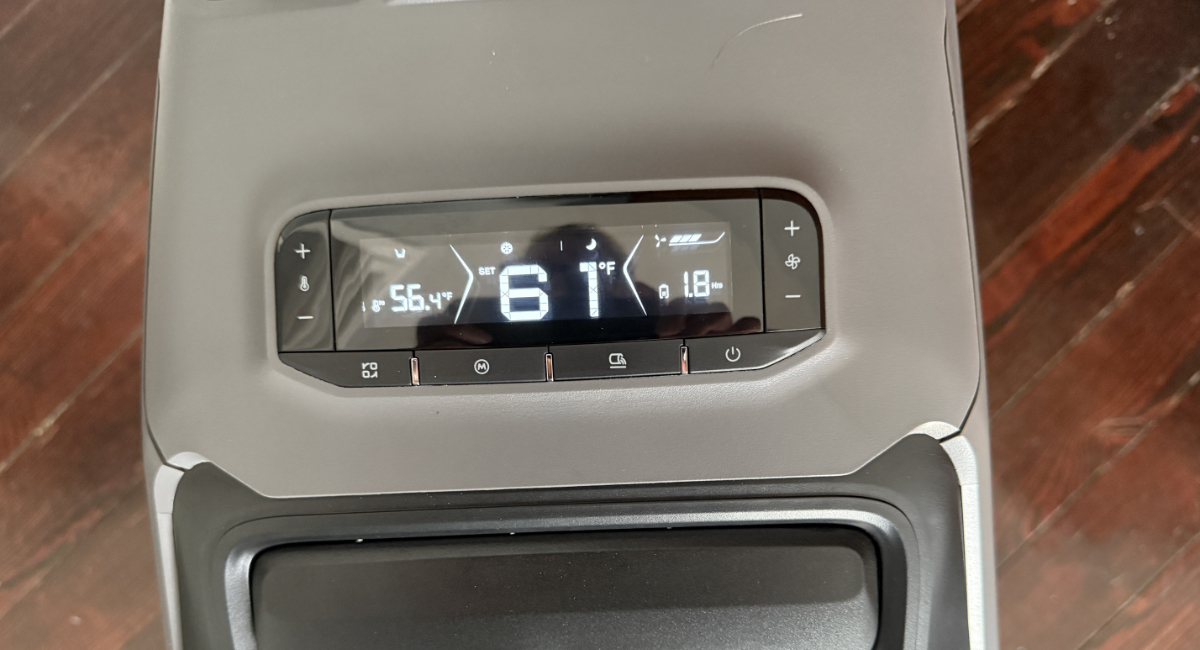
Photo Credit: Kraig Becker
More Modes
The third-generation Wave has a slew of new modes that give users more functionality and control. You’ll still have a “Normal,” “Max,” and “Eco” modes, each of which offers different levels of performance with a corresponding impact on battery life. For instance, Max mode will cool or heat a room the fastest, but is louder and requires more power. Meanwhile, Eco mode is a quieter and more efficient, but takes longer to achieve the desired temperature.
You’ll have a lot more leeway on how you choose to use those modes when plugged into a power outlet at home. But when utilizing EcoFlow’s add-on battery pack or a power station, you may want to be more conservative. On Max mode, you’re likely to only get about two or three hours of use, but in Eco mode, you’ll see up to eight hours of runtime.
The Wave 3’s upgraded features also include three new modes—Sleep, Automatic, and Pet Care. In Sleep mode, the unit drops its noise levels down to just 44dB, making it much quieter while in operation. Automatic allows the device to switch between heating and cooling as needed, which proved handy in the ever-changing conditions of spring. In the mornings and evenings, it acted as a heater as the temperature dropped, while during the day it pumped out cool air in response to warmer conditions.
Finally, Pet Care mode lets the device monitor the temperature around it and automatically turn on if that temperature rises above 77ºF. If this happens, it will also send an alert to your smartphone via the EcoFlow app, letting you know the Wave 3 has been activated. This is a nice feature to have, allowing you to safely leave your furry friends behind in the RV, knowing that the air conditioner will activate if things start to get a little too warm.
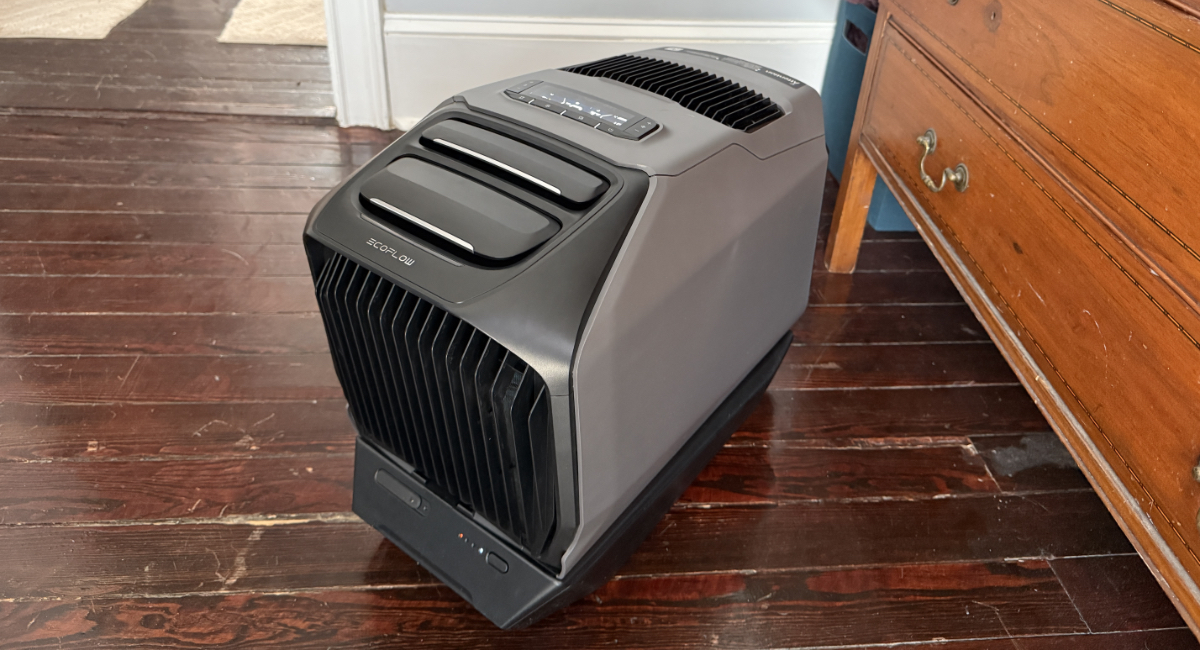
Photo Credit: Kraig Becker
Other Refinements, Too!
In addition to adding more operational modes, EcoFlow has continued to refine the Wave in other ways, too. For instance, controlling the device with the EcoFlow app is a smoother, faster experience, with intuitive controls and an easy-to-understand interface. The app also lets you monitor the battery and onboard water tank, letting you know when you need to recharge the power cells or drain the accumulated moisture. You can even set an auto-shutdown timer, turning the Wave 3 off after a set amount of time has passed.
As already noted, the Wave 3 now works as a dehumidifier, taking excess moisture out of the air to maintain consistent temperatures and comfort levels. This is a much-welcomed feature and, in our experience, it works quite well. It does require emptying the builtin water tank regularly, but thankfully, the device provides an alert, both on its built-in display and via the app, when it’s time to drain the water.
As usual, the Wave 3 is incredibly well built and offers excellent versatility. During our testing, it was mainly used to warm or cool a small room, but it works equally well for an RV or tent. The unit comes with the necessary accessories to connect it to your rig, including a hose for draining water. It works especially well with Class B camper vans and small towables, in particular, providing a plug-and-play option for adding heating and cooling to those vehicles.
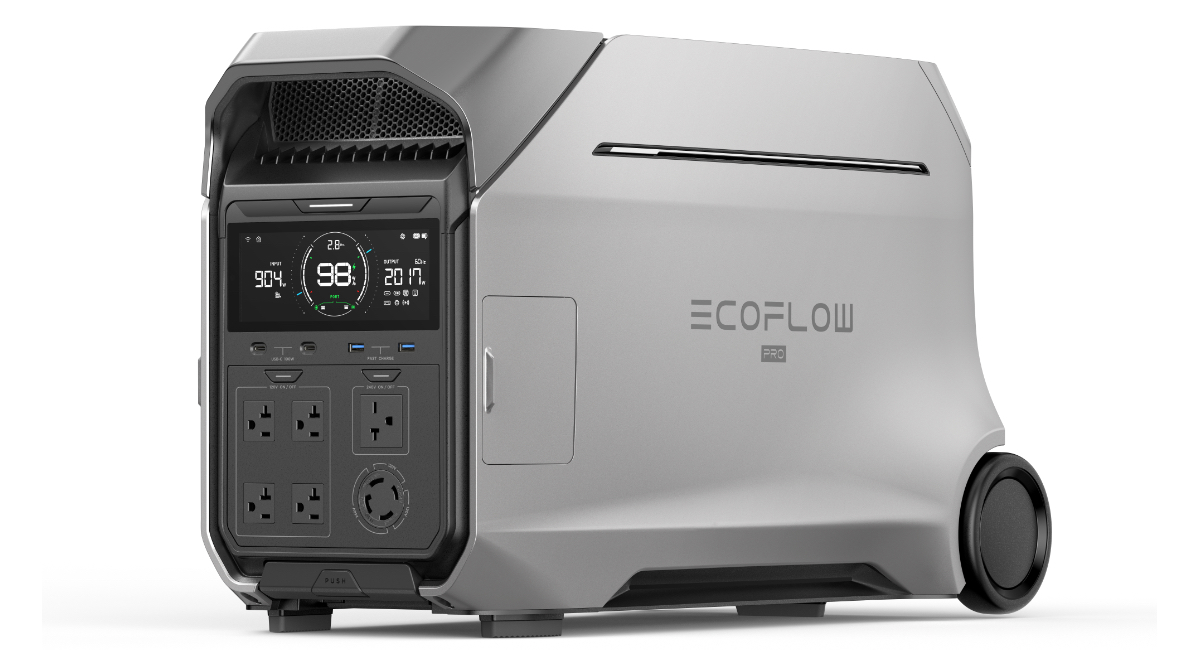
Photo Credit: EcoFlow
Powering the EcoFlow Wave 3
As noted, there are multiple ways of providing power to the Wave 3, the easiest of which is simply plugging it into the wall. But since this device is designed to be used just about anywhere, you can also plug it into a portable power station. EcoFlow’s own solar generators make a great option for doing this of course, with the powerful Delta Pro 3 model offering up to 40 hours of use while camping off-grid. Smaller units offer anywhere from 2-20 hours depending on the model and settings.
One of the cleanest ways of powering the Wave 3 is by adding EcoFlow’s add-on battery pack made especially for the device. This power solution seamlessly connects to the bottom of the Wave 3, greatly extending its runtime in the process. The only downside is that it adds additional weight, too. The air conditioner itself tips the scales at 33.7 lbs., while the battery pack adds an additional 21.4 lbs, bringing the total to just over 55 lbs. That can make it a little bulky to move around.
The Wave 3’s versatility extends to its ability to recharge its onboard battery and connected add-on battery pack. In addition to recharging from a wall outlet, it can also power up using solar panels, using an EcoFlow alternator charger in your vehicle, and directly from a power station. And even with the add-on battery, it charges surprisingly quickly, topping out in just two hours from a wall outlet and as fast as three hours from solar.
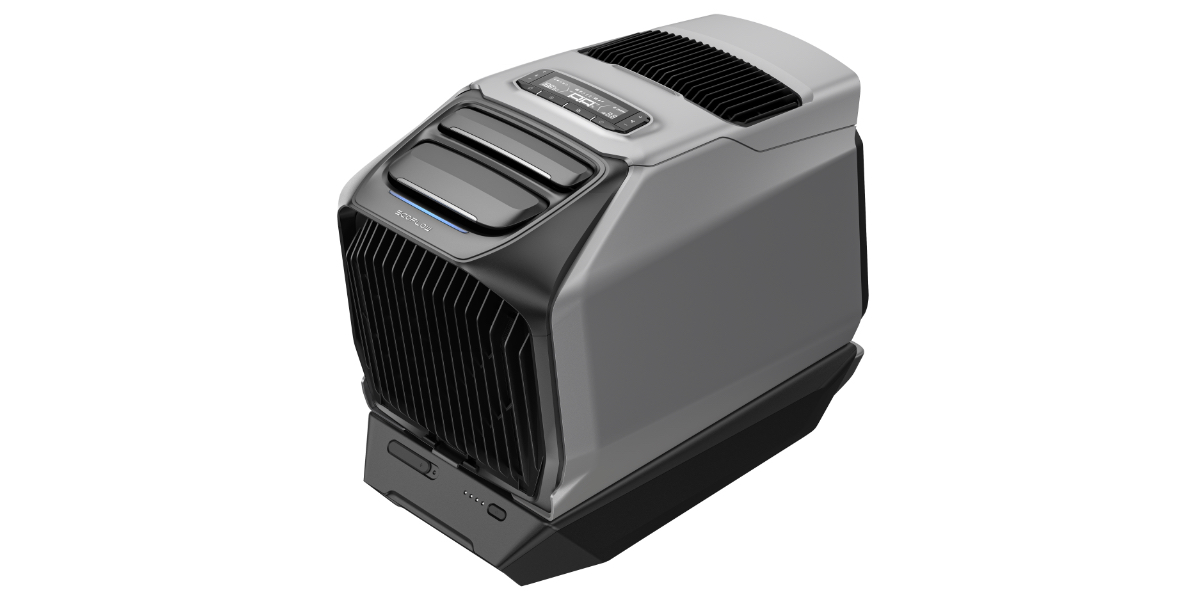
Photo Credit: EcoFlow
Closing Thoughts
Having tested and reviewed the previous two generations of Wave air conditioners, I can honestly say there weren’t a lot of surprises when testing the Wave 3. This isn’t a revolutionary upgrade to what EcoFlow has done in the past, but is instead an evolutionary shift, adding new features and refinements to an already great product.
That said, a lot of small additions and changes can add up to significant improvements. Such is the case with the Wave 3, which offers a simpler, more enjoyable, and efficient experience than its predecessors. For anyone wanting to add heating and cooling to their RV, this product stands alone in terms of power, functionality, and ease of use.
The EcoFlow Wave 3 is available to preorder on the EcoFlow website now, and will be available for purchase on Amazon and at EcoFlow.com on April 25. Early bird pricing will run from that date through May 25, with the Wave 3 selling for $749, the add-on battery pack priced at $599, and a bundle of both devices for $1,299.
After the early-bird purchasing window, the Wave 3 will be priced at $1,299, while the add-on battery pack will sell for $899. Bundled together, the two products will have an MSRP of $2,198.
The post EcoFlow Wave 3 Review: Better in Every Way appeared first on RV.com.
Source: https://www.rv.com/gear-accessories/ecoflow-wave-3-review-better-in-every-way/


